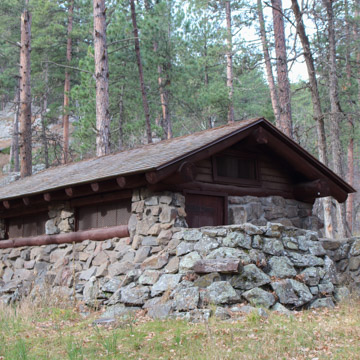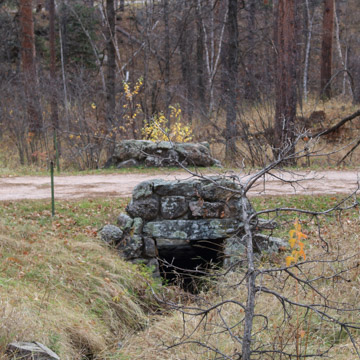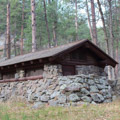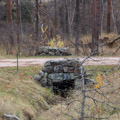Located in the Black Hills, the Grizzly Bear Campground is on a portion of U.S. 16A known as Iron Mountain Road, a seventeen-mile stretch between Mount Rushmore and Custer State Park. The Civilian Conservation Corps (CCC) built the campground in 1936. The twenty campsites are arranged around an oblong road in a forested setting with pine, spruce, and aspen trees. At its center is a picnic pavilion, whose construction of locally sourced boulders and stones is typical of the Rustic style employed by the U.S Forest Service. Massive corner posts, wider at the bottom, support the low hipped roof and appear as if they have risen from the earth. A stone fireplace on one end of the pavilion mimics the construction of the corner posts. South of the pavilion is a latrine with similar materials and massing.
The CCC completed extensive work in the Black Hills, much of which was devoted to conservation efforts, fire prevention and suppression, building of trails and roads, and installation of telephone wires. Other structures built by the CCC include ranger stations, fire lookouts, bridges, dams, and recreational facilities.
Grizzly Bear Campground remains a primitive site with no running water or flush toilets.
References






